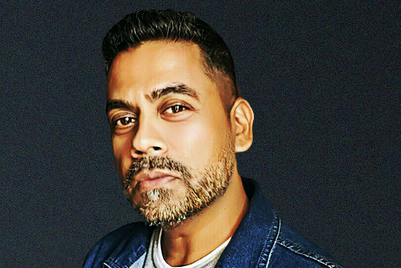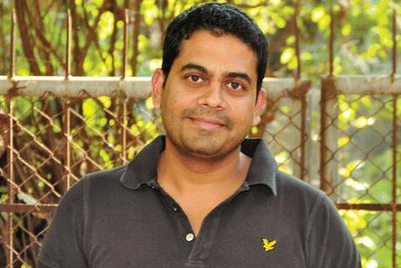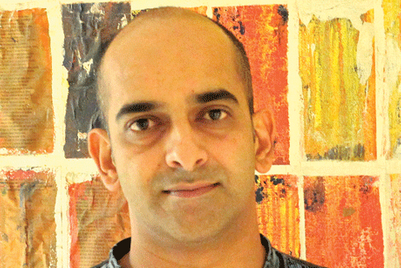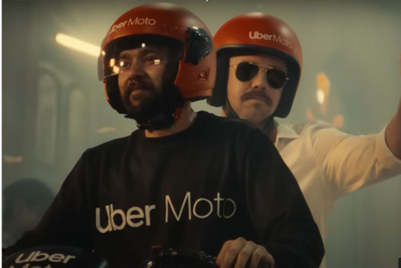In November 2015, Sagar Mahabaleshwarkar moved from Bates Chi&Partners Singapore, where he was ECD, to take on the role of CCO at Cheil India. This was less than a year after he had moved to head creative at the WPP agency’s Singapore office. While he calls the international exposure ‘outstanding’, for it gave him the opportunity to work in markets like Myanmar. Malaysia, Vietnam and China, he came back because he thought that his strength is in understanding the Indian market.
“I was always asked as to how I could pitch for clients in Myanmar without having been there. I said don’t forget Brahmdesh (Burma) was part of India. When you are in developing countries like India, you get a good sense of what the middle class is thinking. You can sense that they are looking forward to getting in touch with the rest of the world. They are looking for new ideas, and technology is helping them do that,” says the 45-year-old creative.
From Ogilvy to Cheil
Mahabaleshwarkar loves cricket and used to play the game, but decided to pursue design and art as a career – a talent his mother spotted. After graduating from MSU, Baroda, he joined Design Core India in 1990 in Bengaluru. There, he worked with clients such as Wipro, UB Group and Titan as a design specialist. In 1992, he joined O&M Bengaluru’s art team. While he was working on brands like Brooke Bond, Three Roses, Red Label and Titan, he was yearning to come back to Maharashtra, closer to the family.
He spoke with Sanjay Naik, and then Piyush Pandey. The latter asked him what he does, to which he cheekily replied ‘I Open’, instead of talking about his designation and work, knowing Pandey’s interest in cricket. He was asked to join the Mumbai office immediately. He joined O&M Mumbai in 1996 as art director.
“The O&M journey was outstanding. Sonal Dabral was creative director in Mumbai, and Piyush was already an NCD. It was a time when Ogilvy was changing drastically. Ranjan Kapur was supporting the creative product to (take it to) a different level. From 30 creative people, it went on to become 250-odd team,” he reminisces. He calls Ogilvy an institution. “It is a place made with so many people, with great leadership. It is an institute, and a great place for learning for youngsters to go and study. Because you will come out as a well-rounded product, ready to lead,” he says. He notes how many good campaigns such as SBI, Bank of India, Exide, Amaron, Tata Safari-Sumo-Sierra, Neo Sports, Star TV helped them to achieve creative glory. “By default, we dominated the automotive category and then became finance experts,” states Mahabaleshwarkar.
Itching to get telecom experience, and driven by the fear of getting ‘too comfortable’ at Ogilvy where he had already spent 15 years, led him to join Rediffusion Y&R as CCO. He worked on Airtel, Tata Sky, Taj and Kingfisher Airlines. “Gopal Vittal and R Chandrasekhar, the clients (Airtel), were outstanding. They helped me to do some good work like the (actors) Vidya Balan–Madhavan series. It was quite popular and some really good work happened,” he recalls.
Armed with strong expertise in telecom, automobiles and finance, Mahabaleshwarkar joined Bates in 2010, after Piyush Pandey asked him to join Sonal Dabral. Then, he got the opportunity to move to Singapore in December 2014, helping David Mayo to pitch for businesses in different regions. Thanks to the stint, he picked up playing tennis again – a game he fondly calls as his family’s favourite.
Shiv Sethuraman called him barely a month after he had shifted to Singapore. The conversations began. While it was pre-decided that he would return post two years, realising the potential at Cheil, Mahabaleshwarkar returned earlier.
Technology and creativity
Talking about Cheil, and his mandate, he reveals, “Cheil is an interesting place with clarity of vision, and great clients. My single-minded mandate is to create kickass integrated campaigns. The goal is to shine and bring creative output to a level where you can become ‘Agency of the Year’ at some point. My mandate is to make sure that all creative minds and departments work together.” He underlines the importance of delivering integrated campaigns with the help of technology.
Mahabaleshwarkar thinks that technology is ‘helping creativity reach new levels’. “I love the way the market has evolved. From design to digital, I have managed to collect expertise because of three different verticals that I have worked on. Technology helps you to create interesting ideas. Technology has redefined the game completely just like TV redefined the game in the ’80s. Lot of creativity changed, and people who could adapt and understand TV as a medium survived and flourished. A similar thing is happening for the last eight-odd years. The new media is changing the creative work. You have to be expert in this medium,” he notes.
Over the years, he has also won at creative award shows including Cannes Lions (Gold, Silver, Bronze), One Show, Clio, D&AD, Abbys and the Yahoo Big Ideas Chair, as well as effectiveness awards like the Effies. Awards and creative excellence do motivate him, but he says he doesn’t get carried away by it. “Today, in our industry, creative excellence comes from many ways. And awards is one of them. When you are recognised by the work you created, that is a huge reward. It matters more than awards. I do not look only for metals, but also for rewards. I don't get carried away by awards because it is just two minutes of glory to the stage and back. Once you pick up the award, it's over. You have to work for the next. It is a pat on the back. I am here to chase creative excellence, otherwise why am I here?”
He still draws, only now it’s on his Samsung phone, which he reveals grinning. He is, however, still attached to his drawings. He was asked to sell his first painting, but he refused. He might sell them now if he gets a buyer, quips Mahabaleshwarkar.
The Formula One enthusiast highlights that it is nice to meet numbers, and get new businesses but is quick to add that he wants Cheil to be recognised as a creative ‘hot house’.
People and ideas
“It is a good start at Cheil. There is lot to do. Lot of people need guidance and motivation. We just need to tweak things here and there, and not change anything drastically. And everything will be in place,” he notes.
The CCO adds, “Because of my experience of travelling, and across various agencies, every media vertical is critical to me. Also, you do not know who will give you the opportunity to crack the great idea. It is important to spend as much time on smaller clients as bigger clients. Sometimes you spend more time and energy on smaller brands because it is an interesting journey. That is what I have been telling people – look at it from an idea perspective rather than platform perspective.”
He notes that everybody – clients and ad agencies – are looking for ideas that will give them maximum mileage. “Clients are looking for impactful communication, especially in digital media that will get them more conversations. People who walk in with only traditional communication will always fall out,” underlines Mahabaleshwarkar, adding that this applies to clients too.
He explains that the consumers are more aware now, and are questioning everything. “There was a time when shelf life of a TVC was one year. VIP Frenchie ad ran for seven or eight years. Now, the shelf life of an ad has become months, or just limited to an event. Campaigns are created to last as long as IPL is played. Shelf life of a campaign has become shorter and social media is playing an immense role in that. New styles, trends, techniques are defined by new technology. You have to get it right, for every communication. The game has changed. That is my reading,” he states.
He underlines that he has been ‘extremely lucky’ to have worked with people like Ramanuj (Shastry), Piyush (Pandey) and Sonal (Dabral), who have contributed so much to the way he thinks or looks at life. Noting that a good mix of experienced players and the younger lot makes a winning team, he adds that he encourages people to work with multiple partners.
Challenges
The CCO highlights how some part of the audience is running ‘so fast’, and some not as fast, which brings the challenge of not being able to apply the same set of communication across all sets of consumers. Just as some categories are moving very quickly (like automotive, finance), he contends that others are still taking ‘a very traditional approach’.
He is enthused, however by how interesting ideas are coming from young entrepreneurs (clients). On the agency end, his reading is that some have lagged behind, unsure of which way things are headed.
Not all is gloomy though. Mahabaleshwarkar notes that a few agencies are doing a fantastic job at understanding this game, and addressing such client needs.
“It is not the same model that existed 10 years back, and that is why smaller agencies are doing so well because they have understood the game,” he notes. He credits Samsung for Cheil’s understanding of the new model: “You have first-hand experience with a technology brand, and this brand wanted it over the last few years. We have got this expertise very quickly because of Samsung. We do not look at a brief and say, we need a TVC; we rather look at what is the platform idea we are cracking, which is media neutral. Clients are open to see things that way now.”
“And that is helping us pick up new businesses like HCL Healthcare. That is our advantage,” he signs off.
(This article first appeared in the 5 February 2016 issue of Campaign India)
.jpg&h=570&w=855&q=100&v=20250320&c=1)
.jpg&h=570&w=855&q=100&v=20250320&c=1)


.jpg&h=334&w=500&q=100&v=20250320&c=1)
.jpg&h=334&w=500&q=100&v=20250320&c=1)



.jpg&h=334&w=500&q=100&v=20250320&c=1)


.jpg&h=334&w=500&q=100&v=20250320&c=1)
.jpg&h=334&w=500&q=100&v=20250320&c=1)








